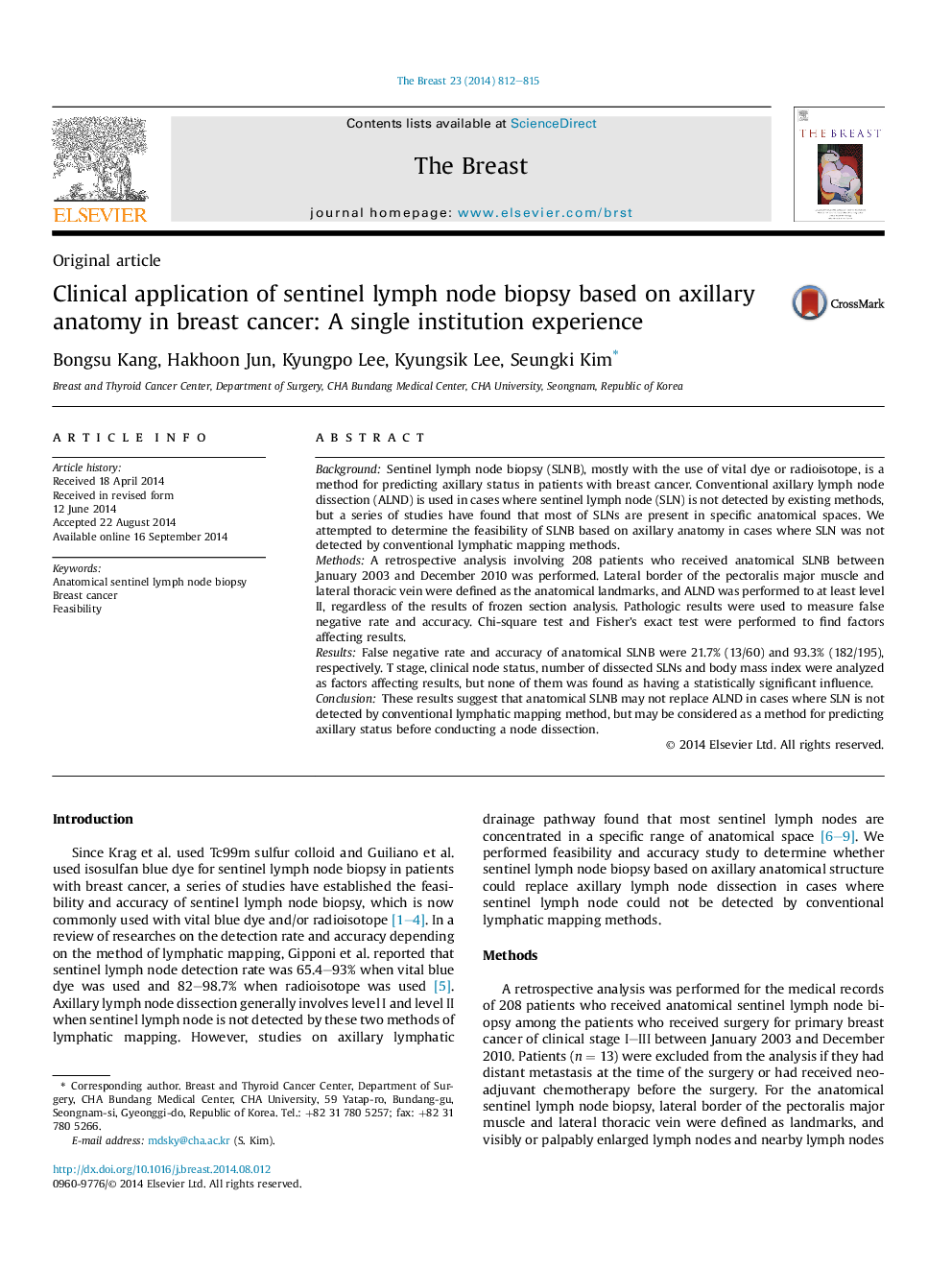| کد مقاله | کد نشریه | سال انتشار | مقاله انگلیسی | نسخه تمام متن |
|---|---|---|---|---|
| 3908603 | 1251185 | 2014 | 4 صفحه PDF | دانلود رایگان |
BackgroundSentinel lymph node biopsy (SLNB), mostly with the use of vital dye or radioisotope, is a method for predicting axillary status in patients with breast cancer. Conventional axillary lymph node dissection (ALND) is used in cases where sentinel lymph node (SLN) is not detected by existing methods, but a series of studies have found that most of SLNs are present in specific anatomical spaces. We attempted to determine the feasibility of SLNB based on axillary anatomy in cases where SLN was not detected by conventional lymphatic mapping methods.MethodsA retrospective analysis involving 208 patients who received anatomical SLNB between January 2003 and December 2010 was performed. Lateral border of the pectoralis major muscle and lateral thoracic vein were defined as the anatomical landmarks, and ALND was performed to at least level II, regardless of the results of frozen section analysis. Pathologic results were used to measure false negative rate and accuracy. Chi-square test and Fisher's exact test were performed to find factors affecting results.ResultsFalse negative rate and accuracy of anatomical SLNB were 21.7% (13/60) and 93.3% (182/195), respectively. T stage, clinical node status, number of dissected SLNs and body mass index were analyzed as factors affecting results, but none of them was found as having a statistically significant influence.ConclusionThese results suggest that anatomical SLNB may not replace ALND in cases where SLN is not detected by conventional lymphatic mapping method, but may be considered as a method for predicting axillary status before conducting a node dissection.
Journal: The Breast - Volume 23, Issue 6, December 2014, Pages 812–815
